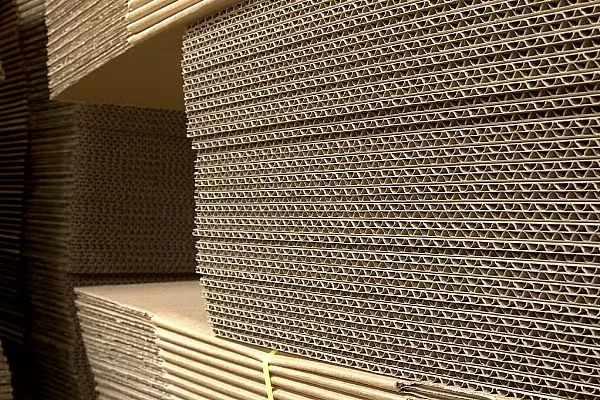Corrugated packaging continues to gain importance in the current e-commerce era. Various research efforts have highlighted the significance of e-commerce as a burgeoning trend in recent years, one that has been pushed into overdrive since the onset of the COVID-19 pandemic.
According to a report from UNCTAD, movement restrictions implemented during the crisis led to a surge in the share of online retail from 16% to 19% of the cumulative retail sales in 2020.
Powered by changes in both consumer and retailer behaviours, the rise of e-commerce is also evident in the way corrugated packaging demand has evolved. According to estimates from GMI, the corrugated packaging market is poised to cross $91.3 billion (€85.3 billion) by 2028.
Corrugated Board-Based Packaging To Lead The Charge
With this in mind, and with increased pressure from younger consumers, particularly Millennials, to become more environmentally responsible, major brands are working hard to elevate eco-friendly packaging from a mere concept into a realistic strategy.
Sustainable packaging has become the need of the hour, especially given the increasingly severe burden being placed on the environment by packaging waste. According to a study published in Science Focus, nearly 53 million tonnes of plastic are set to end up in oceans, rivers, and lakes each year by 2030. These alarming statistics have triggered action from government and regulatory authorities across the world.
In Singapore, for instance, the Packaging Partnership Programme (PPP) was introduced as an industry-led initiative at the Sustainable Packaging for Our Shared Future-themed inaugural PPP Conference in March 2021. Established as a collaborative effort by the SMF (Singapore Manufacturing Federation) and the NEA (National Environment Agency), the initiative was geared towards enhancing industries’ ability to manage packaging waste better and more sustainably.
The corrugated packaging industry, in particular, has become one of the most prominent contributors to the eco-friendly packaging movement.
Corrugated board is considered among the most recyclable materials in the world, with corrugated board-based packaging consisting of between 70% to 90% recycled materials. The popularity of corrugated cardboard packaging is also bolstered by the fact that its production does not require the use of bleaches, dyes, or other similar materials that add to the environmental footprint of the packaging industry.
This trend has caught the attention of numerous brands worldwide, who have pledged to make the switch to more sustainable and circular corrugated cardboard packaging over the years ahead.
A notable example of this is Procter & Gamble, which in 2020, announced its commitment to utilise 100% recyclable or reusable packaging, with an aim to cut down its use of virgin petroleum plastic in packaging by half by the year 2030. A major part of this effort by the multinational entity was to make a shift towards corrugated and cardboard packaging for its major brands, such as the Tide Eco-Box.
Digital Printing – Technology Of The Future
Popularised by its relatively economical short-run production in comparison to flexo, digital printing is becoming a sought-after solution in corrugated packaging plants for the development of prototypes, samples, and other small-batch tasks. As per Global Market Insights Inc. estimates, the corrugated packaging market could register a growth rate of nearly 4.4% through 2028 from the digital printing segment.
Over the years, however, the scope of the technology has broadened considerably into the manufacturing of corrugated cardboard packaging products on account of its shorter lead times, high-resolution graphics, personalisation, and faster turnarounds, among other benefits.
Corrugated packaging producers worldwide have started to recognise digital printing technology as an ideal solution to increasing profitability and efficiency and are thus starting to consider it a valuable addition to their pressrooms.
Sturdier Packaging
On an average, e-commerce packages are handled over twenty times during the shipping process, which has necessitated the use of sturdier and more durable packaging materials like corrugated cardboard.
Estimates from the Fibre Box Association corroborate this trend, showing that corrugated shipments rose by nearly 9% from March 2019 to March 2020, on account of the rampant overstocking of cleaning supplies, food, and household paper during the early months of the coronavirus pandemic.
Amid residual impacts from the crisis as well as growing awareness regarding the urgent need to address climate change, the packaging industry’s approach is witnessing significant evolution and growth. In this scenario, solutions like corrugated packaging are likely to become the foundation for a more sustainable e-commerce ecosystem.
© 2022 European Supermarket Magazine. Article by For more Packaging & Design news, click here. Click subscribe to sign up to ESM: European Supermarket Magazine.













